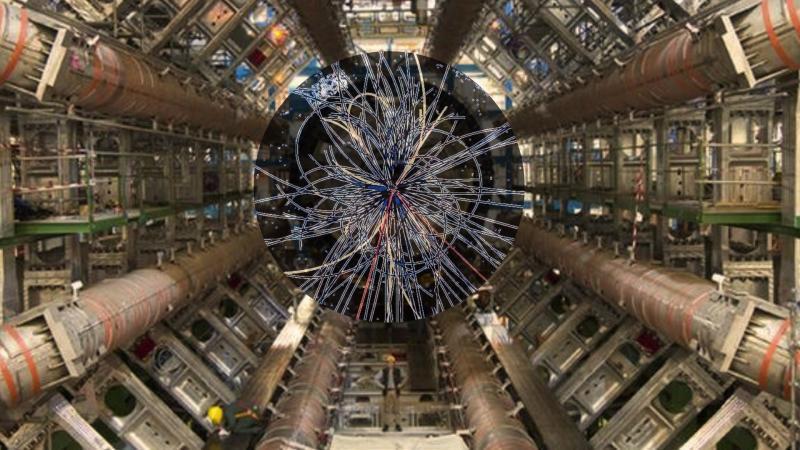
CERN Scientists Shedding Light on Antimatter & Universe’s Origins
For decades, scientists at CERN’s Large Hadron Collider (LHC) have been on a quest to understand the fundamental forces of nature and the mysteries of the universe’s origins. Recently, their tireless efforts have led to a groundbreaking discovery that sheds light on antimatter and the early moments of the universe. The ALICE collaboration at the LHC has confirmed the first evidence of antihyperhelium-4 (4He), a rare and exotic particle that holds the key to understanding the balance between matter and antimatter.
The Search for Antimatter
Antimatter is a fascinating and elusive phenomenon that has long fascinated scientists. It is the mirror image of regular matter, with antiparticles having the same mass as their matter counterparts but opposite charges. For every particle of matter, there is an antiparticle with the same mass and opposite charge. For instance, an electron has an antiparticle called a positron, which has the same mass as an electron but a positive charge.
The existence of antimatter was first proposed by physicist Paul Dirac in the 1920s, and its discovery in the 1930s by Carl Anderson and others confirmed the theory. However, despite its theoretical existence, antimatter is extremely rare in the universe, making up only about 0.000001% of the total matter.
The Large Hadron Collider
The Large Hadron Collider is a powerful tool for scientists to study the fundamental nature of matter and antimatter. It is a 27-kilometer-long circular tunnel buried beneath the French-Swiss border, where two beams of protons are accelerated to nearly the speed of light and made to collide at incredibly high energies.
The ALICE (A Large Ion Collider Experiment) collaboration at the LHC is dedicated to studying heavy-ion collisions, which involve the collision of heavy ions such as lead and gold. These collisions create a hot and dense medium that is similar to the conditions that existed in the early universe, just after the Big Bang.
The Discovery of Antihyperhelium-4
The ALICE collaboration has recently confirmed the first evidence of antihyperhelium-4 (4He), a rare and exotic particle that is the antiparticle of regular helium-4. This discovery is significant because it provides insights into the fundamental forces of nature and the balance between matter and antimatter.
The production of antihyperhelium-4 requires extreme conditions, such as the high energies and temperatures created in heavy-ion collisions. The ALICE collaboration has observed the production of 4He in these collisions and has confirmed that it is the antiparticle of regular helium-4.
Implications for Our Understanding of the Universe
The discovery of antihyperhelium-4 has significant implications for our understanding of the universe. It provides insights into the fundamental forces of nature and the balance between matter and antimatter.
One of the biggest questions in physics is why the universe is dominated by matter, despite the fact that antimatter should have been created in equal amounts during the Big Bang. The discovery of antihyperhelium-4 provides new opportunities for scientists to study the balance between matter and antimatter and to understand why the universe is dominated by matter.
Conclusion
The discovery of antihyperhelium-4 by the ALICE collaboration at the LHC is a significant breakthrough in our understanding of antimatter and the universe’s origins. This rare and exotic particle provides new opportunities for scientists to study the fundamental forces of nature and the balance between matter and antimatter.
The Large Hadron Collider is a powerful tool for scientists to study the fundamental nature of matter and antimatter, and the ALICE collaboration’s discovery of antihyperhelium-4 is a testament to the power of human curiosity and ingenuity.
Source:
https://researchmatters.in/news/exotic-antimatter-spotted-heavy-ion-collisions-lhc






